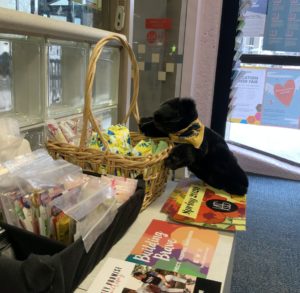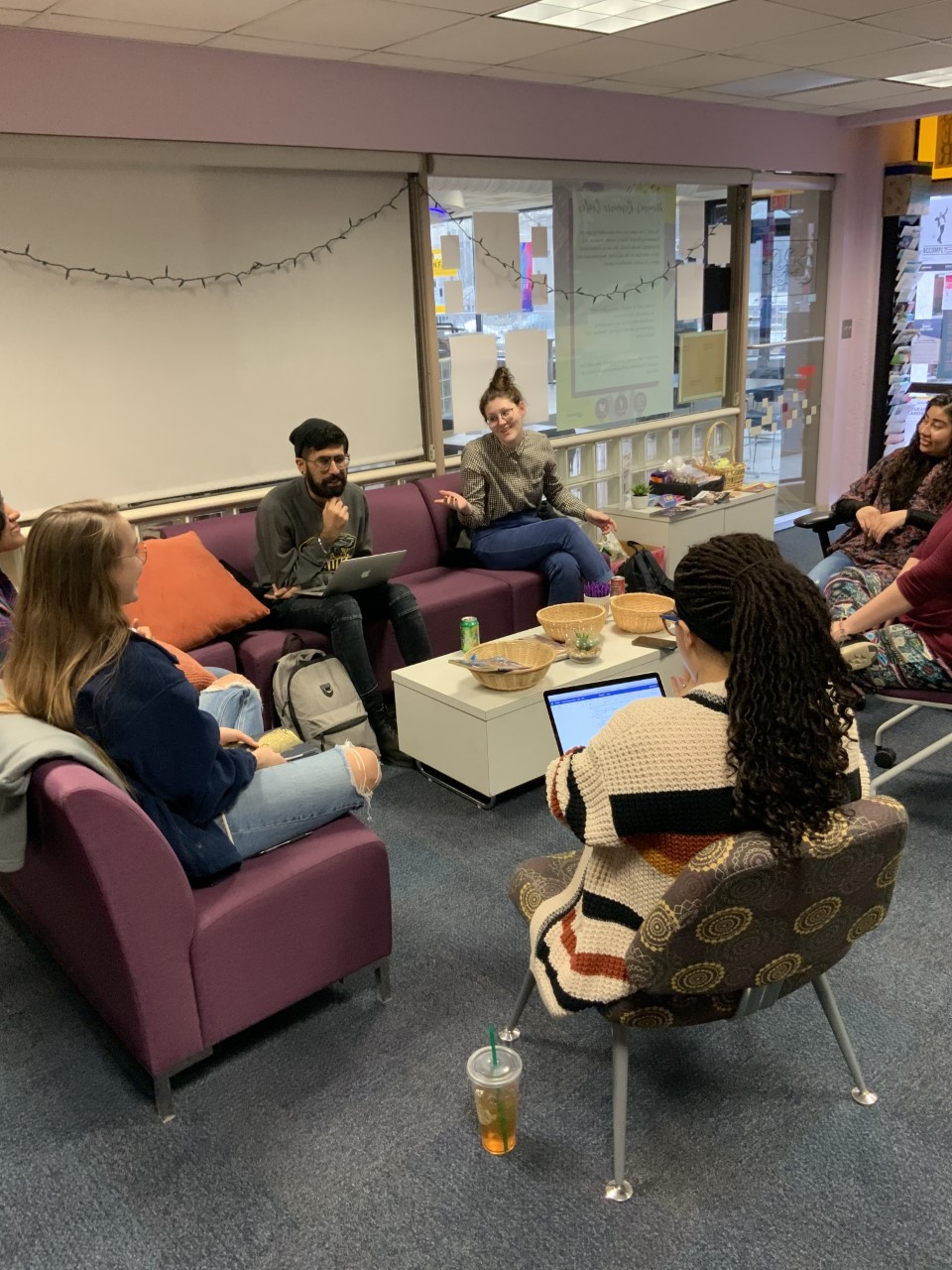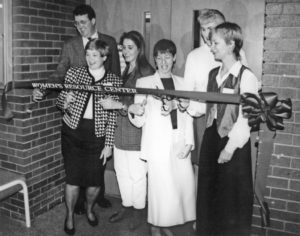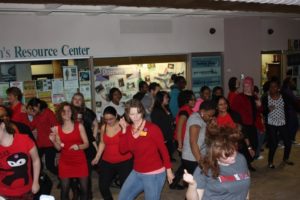About the Women’s Resource Center (WRC)
Our Mission
The Women’s Resource Center (WRC) is an open and safe space that focuses on empowering women, ending gender violence, and establishing gender equity.
We use an intersectional lens to advocate for the education, empowerment and agency of women-identified students. Our vision is equality for all students.
What We Do
- The WRC coordinates large and small programs related to women’s empowerment, raising awareness about gender-based issues, feminism and social justice, with the goal of establishing gender equity for all. We partner with many offices/centers and student orgs on campus well as with our community partners.
- We also coordinate the Ambassador Program, which allows students to develop professional and leadership skills, connect with the WRC and other students on campus, and learn more about how to apply feminism to their everyday lives!
Services and Resources

- The WRC is an open, safe space where students can hang out, relax, study, and meet new people!
- We offer free safer sex supplies (condoms, dental dams, lube) and free menstrual hygiene products (pads, liners, tampons).
- We have a Lending Library with hundreds of books and resources.
- We partner with the UWM Food Center and Pantry and can help students access the Food Pantry when the Food Pantry is open.
- We also have access to the Lactation Room in the Student Union (WG23) for folks who are nursing/lactating.
- The WRC also connects students to on-campus and community resources, if needed. We also assist in supporting students who have experienced sexual violence.
The WRC and Gender
- We strive to create a space where everyone feels welcome and supported in the WRC!
- All students are welcome to use our space and access our resources.
- At the WRC, we work to avoid replicating systems and language that renders transgender and gender non binary folx marginalized and invisible.
- When we use “women-identified” this is including but not limited to: transgender folks, femmes, and non-binary/gender-nonconforming folks who identify with womanhood. There are many ways to express and embody femininity and that womanhood looks differently and means something different for everyone!
- The WRC efforts are not meant to be exclusionary, as our defining of “women” includes multiple identities (including but not limited to those who identify as women, transgender, femme, and non-binary and/or gender-nonconforming). We also understand that women experience gender-based marginalization, and that this marginalization is compounded by other intersecting identities. The WRC is intended for those who self-identify as women (cis and trans) and all who have lived experience of misogyny as well as non-binary people.Work on homework
Community Guidelines
You Can
- Work on homework
- Talk with friends
- Eat food (be mindful of allergens, check in with other people in the space!
- Plug chargers in
- Ask the staff about programs, things in the space, etc.
- Grab a cup of coffee or tea
- Draw, work on crafts, etc.
You Cannot
- Use slurs, hate speech, or engage in harmful debate
- Play audio out loud
- Talk about diets/diet culture (don’t moralize food, we believe in giving our bodies what they need!)
- Leave food and drink behind; please take it with you or throw it out!
Please know:
- All staff members, both professional and students, are mandated reporters. If you choose to have conversations about abuse of any kind, please know that we are required to report.
- Our space is open to kids! We support and welcome student parents
- This is a sex positive space! Please be respectful of what others enjoy
- We make space for uncomfortable conversations and don’t shame those who are learning! It’s okay if you don’t know much about feminism, we’re happy to share resources with you if you want to learn more.
- You’re welcome to talk about drugs and alcohol, but be mindful and respectful of those who maintain sobriety and don’t discourage their efforts.




